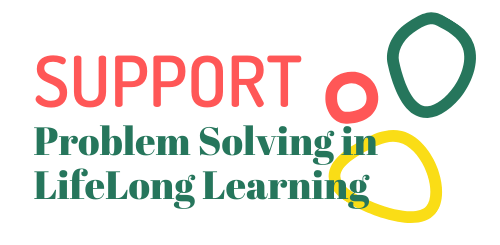Attitudes and Group Dynamics
Solving the Problem: Activities for Learning Groups
Title of activity
We have an appointment! (Meeting clock)
Working on the activity – Suggestions
Summary: The Meeting clock (or Appointment clock buddies) is an appropriate method to enhance communication and collaboration between participants of a group or to share experiences. It is an ice-breaker activity that can bring the students to get to know each other.
Objective: For each learner to successfully exchange personal information with another four learners.
Description: Utilizing the Meeting Clock method, each student receives a sheet with a drawn clock. The educator asks the learners to agree on several dating times with each other (12 noon, 3 pm, 6 pm, 9 pm) and write them down on the clock. When the clock is completed, the educator announces the first meeting and formulates a question to be discussed during that date. Depending on the complexity of the question, 3-5 minutes are allowed for the interview. The date is followed by a brief reflection (Have we learned something new?; Was the meeting helpful?) After reflection, the same process is repeated with a different question/topic.
Suggestions: As mentioned before, this method works great if the members of the group little known each other -so it is reccommended to take place during the first days of the formation of the class. Additionally it can be used when communication and collaboration is difficult within the team or when you need to share experiences in order to solve a problem or when you want to find out the views of the learners on specific issues.
Learn more
Appointment clock buddies: https://www.lauracandler.com/appointment-clock-buddies/
Title of activity
Working on the activity – Suggestions
Summary: Team-building games, such the one suggested below, are great for engaging learners emotionally thus creating connections between the participants that ultimately lead to the formation of strong and sustainable teams with a common goal. In that regard, inappropriate behavior between the students is a lot less likely to happen.
Objective: For the learners to co-operate in order to successfully pass over the “electric” fence.
Description: The amoeba electric fence is an activity that builds on the trust between the members of the group in order to overcome an obstacle, the “electric” fence, that proves to be fatal. The educator builds that fence by connecting the backs of two chairs with a string. The learners as a team have to go over the fence but they must always remain in contact with one another. They can change positions and move around, only if they are constantly touching others, thus creating the effect of an amoeba. Of course, the fence must not be touched by anything, otherwise the whole group “dies”. It is understandable that a higher level of trust is required to successfully complete the challenge. So, if it fails, you can always keep on working with the group until, in the future, they reach that level.
Suggestions: This activity should be supplemented by a group discussion prior its start and after its completion. You can talk about the hurdles (the “fences”) that as individuals and as part of a larger group we have to face in order to reach a goal and also realize that, socially, we are dependent on others and there needs to be cooperation and a feeling of respect between us (in any social setting).
Learn more
Amoeba electric fence: https://www.youtube.com/watch?v=t0FaWhRaVbY&feature=emb_title
For a detailed description, see also pp. 9-12 on the Team-building games e-book on the resources/training section.
Title of activity
With a little help from my classmates (Peer feedback)
Working on the activity – Suggestions
Summary: Utilizing the peer feedback method, learners will have the opportunity to learn from each other and, as it is a two-way process, cooperation is promoted between them.
Objective: For all the learners to provide constructive feedback to one another in the form of corrections, opinions, suggestions, or ideas.
Description: After certain assignments the educator can employ the peer feedback method. This method refers to learners giving feedback to their classmates in the place of the educator. In that way, not only the new knowledge is consolidated, but, most importantly, connections are formed between the learners as each will try to help the other. It will also be beneficial to see the inner workings of the others’ minds and, in a way, get to know them better which will strengthen the group dynamics. Additionally, the pairs can work together and present an improved assignment.
Suggestions: Not all assignments will be suitable for peer feedback as the students may not have the necessary knowledge. So, it is advisable to make sure that all the learners can respond to it or be specific on the type of feedback it is required (for example, opinions or suggestions instead of corrections).
Solving the Problem: Self-reflection (educator’s reflection)
Points for Discussion with your Organisation
Suggested Training Course available online
